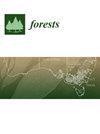探索冬季校园开放空间的多感官耦合关系
IF 2.4
2区 农林科学
Q1 FORESTRY
引用次数: 0
摘要
探索开放空间中多感官互动的综合效应有助于提高校园环境的舒适度。本研究选取了福州某大学校园内的九个典型空间作为研究对象。受试者在感知环境后填写现场主观问卷。与此同时,研究人员还测量了气象数据(全球辐射、空气温度、地球温度、风速、相对湿度和光照强度),以确定视觉感知与声热感知之间的相互作用。采用单因素方差分析和 Tukey 后检验来描述测量点之间气象参数的差异,并采用独立的卡方检验来确定热舒适度、声舒适度和视觉舒适度之间的显著关联,进而采用双因素方差分析来研究视觉舒适度、声舒适度和热舒适度之间的交互作用。得出以下结论:(1)在所有热应力水平下,热舒适度(TCV)随着声舒适度(ACV)的增加而增加。(2)每种声音类型的最高和最低声学舒适度(ASV)值均来自 "微冷 "或 "温暖 "条件。热舒适度(TCV)和声学舒适度(ACV)呈正相关。(3) 在 "中性 "条件下,热感值(TSV)随光照强度(LUX)的增加而增加。(4) 当光照强度(LUX)为中等和明亮时,日光感觉值(SSV)随着通用热气候指数(UTCI)的增加而增加。(5) 在 "微冷 "或 "温暖 "的条件下,每种声音类型的最高和最低声感值(ASV)均为 "微冷 "或 "温暖"。本文章由计算机程序翻译,如有差异,请以英文原文为准。
Exploring the Multi-Sensory Coupling Relationship of Open Space on a Winter Campus
Exploring the combined effects of multisensory interactions in open spaces can help improve the comfort of campus environments. Nine typical spaces on a university campus in Fuzhou were selected for this study. Subjects perceived the environment and then completed an on-site subjective questionnaire. At the same time, meteorological data (global radiation, air temperature, globe temperature, wind speed, relative humidity, and illumination intensity) were measured to determine the interactions between visual and acoustic and thermal perceptions. Differences in the meteorological parameters between the measuring points were described using a one-way ANOVA and Tukey’s post hoc test, and a chi-square test of independence was used to determine significant associations between thermal, acoustic, and visual comfort, which in turn led to the study of interactions between visual, acoustic, and thermal comfort using a two-way ANOVA. The following conclusions were drawn: (1) the Thermal Comfort Vote (TCV) increased with the increasing Acoustic Comfort Vote (ACV) at all levels of thermal stress. (2) The highest and lowest Acoustic Sensation Vote (ASV) values for each sound type were derived from either “slightly cold” or “warm” conditions. Both the Thermal Comfort Vote (TCV) and the Acoustic Comfort Vote (ACV) were positively correlated. (3) When “neutral”, the Thermal Sensation Vote (TSV) increased with increasing illumination intensity (LUX). (4) The Sunlight Sensation Vote (SSV) increased with the increasing Universal Thermal Climate Index (UTCI) when illumination intensity (LUX) was moderate and bright. (5) The highest and lowest Acoustic Sensation Vote (ASV) values for each sound type came from either “slightly cold” or “warm” conditions.
求助全文
通过发布文献求助,成功后即可免费获取论文全文。
去求助
来源期刊

Forests
FORESTRY-
CiteScore
4.40
自引率
17.20%
发文量
1823
审稿时长
19.02 days
期刊介绍:
Forests (ISSN 1999-4907) is an international and cross-disciplinary scholarly journal of forestry and forest ecology. It publishes research papers, short communications and review papers. There is no restriction on the length of the papers. Our aim is to encourage scientists to publish their experimental and theoretical research in as much detail as possible. Full experimental and/or methodical details must be provided for research articles.
 求助内容:
求助内容: 应助结果提醒方式:
应助结果提醒方式:


